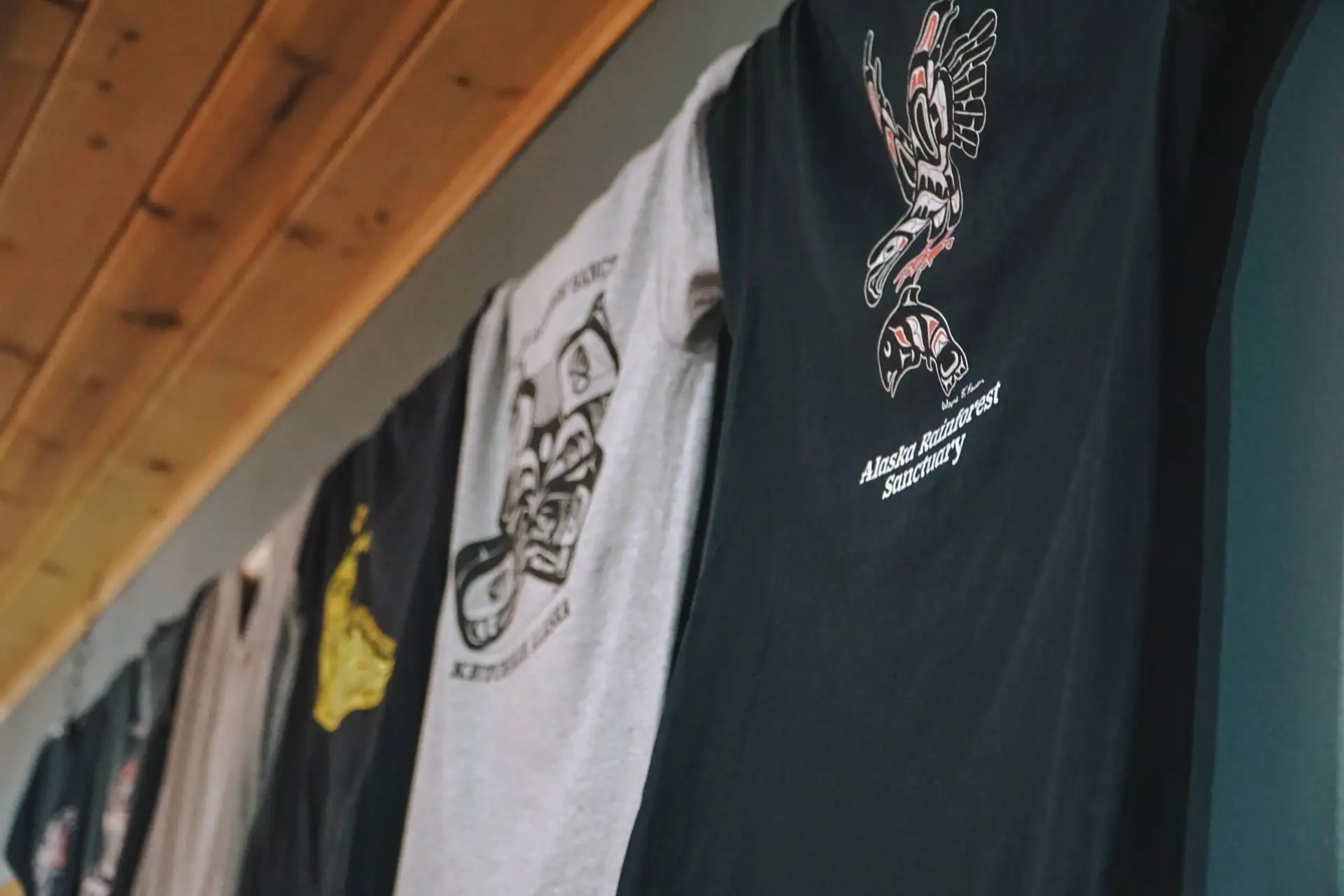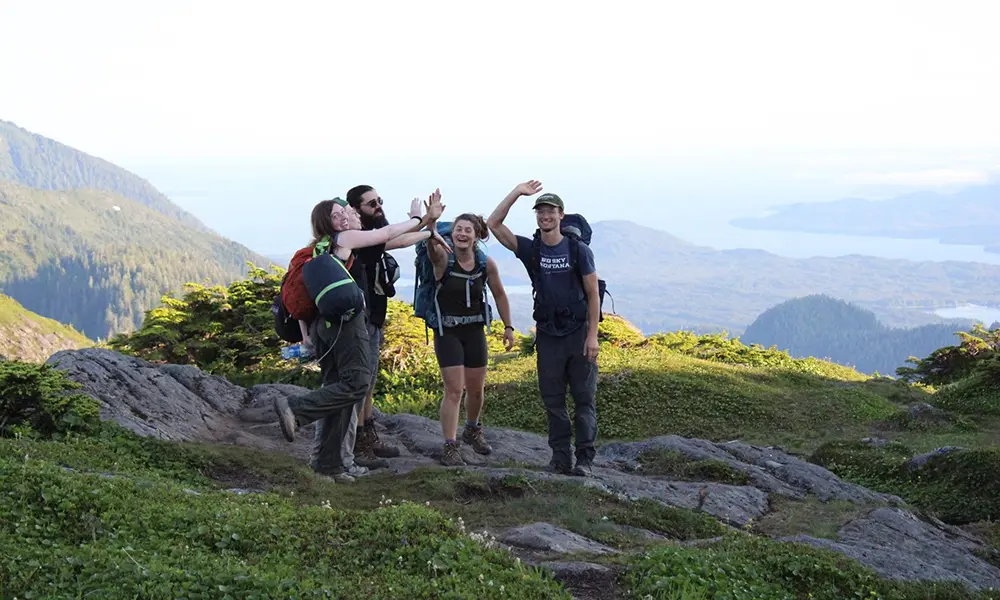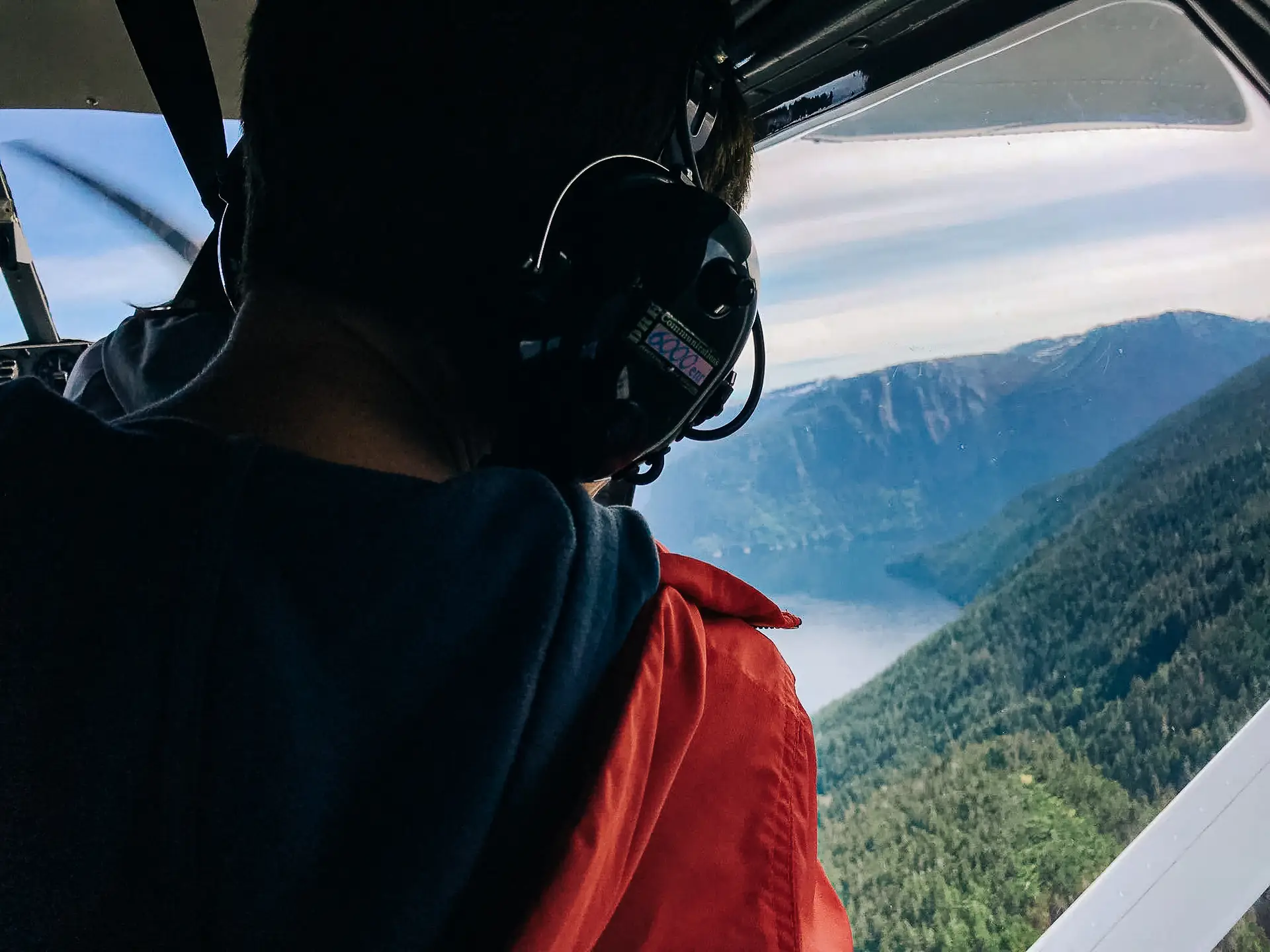There are 3 types of bears in North America: Black Bears, Brown Bears, and Polar Bears. The most abundant of these are Black Bears, which have been recorded in all states except Hawaii, with an estimated 100,000 black bears in Alaska! The best time to see bears in Ketchikan is late July through September.
Size Doesn’t Matter
The black bear may be the smallest of the North American bears with adults about 29 inches at their shoulders and about 60 inches from nose to tail, but you still need to watch your Ps and Qs. Black bears are powerful, fast, and intelligent wild animals, weighing an average of 150-300 pounds and able to reach speeds of 30 miles per hour.
The majority of black bear want to avoid humans. So, what do you do if you unexpectedly encounter a black bear? Stay calm, speak loudly and clearly, make yourself look big by raising and waving your arms, and leave by backing away. Do not run. Do not climb a tree. You can’t run 30 miles per hour and the bear’s 1-2 inch claws are perfect for climbing a tree.
Your Average Bear in the Woods
Black isn’t always black. Black bears can have color variations ranging from brown, cinnamon, blond, white and blue-gray. They often have brown muzzles, and some have a patch of white hair on their chest.
They have an average sense of sight and hearing, but their sense of smell is off the charts! Other than humans, Black Bears have few predators except for other bears, usually brown. In the wild, the black bear life span is approximately 20 years.
Scat and the Circle of Life
Black bears are omnivorous, opportunistic eaters, enjoying plants, berries, insects, carrion, small mammals, fish… you get the idea!
Your best opportunity for seeing black bears is when they are feeding on salmon spawning or preparing to spawn in streams. This feeding location is quite efficient. It ensures the nutrients from the salmon are not washed back out to sea but are moved into the watershed. The subsequent nutrient rich bear scat enhances the growth of trees and vegetation along salmon spawning streams. This enhanced fertilized area has more insects (food) for young salmon.
And so, the circle is complete.







